|
Die Kriegsparteien in Sri Lanka vertreiben Hilfsorganisationen Nach dem Tsunami sind auslA?A?ndische Helfer in Sri Lanka mit offenen Armen empfangen worden. Seit dem Wiederaufflammen des Krieges will man von ihnen nichts mehr wissen. |
||||
|
Andrea Spalinger, Batticaloa Im BA?A?ro einer Schweizer Nichtregierungsorganisation (NGO) in Batticaloa berichtet ein Delegierter konsterniert, seit dem Wiederaufflammen der KA?A?mpfe zwischen Armee und Rebellen Ende Juli sei die Arbeit im Osten Sri Lankas fast unmA?A?glich geworden. Der Mann will nicht namentlich zitiert werden, weil das seine Arbeit nur weiter erschweren wA?A?rde. Lokale Mitarbeiter der NGO hA?A?tten ernste Drohungen erhalten und er wolle deren Leben nicht aufs Spiel setzen. Machtlose AuslA?A?nderBuy proventil inhaler online no prescription Beim letzten Besuch in der an der OstkA?A?ste Sri Lankas gelegenen Stadt hatten Vertreter von Hilfswerken und internationalen Organisationen mit Enthusiasmus ihre Projekte prA?A?sentiert. Heute will fast niemand mehr mit Journalisten sprechen, und wenn, dann nur, ohne zitiert zu werden. Seit der Ermordung von 17 sri-lankischen Mitarbeitern einer franzA?A?sischen Hilfsorganisation im nahe gelegenen Mutur herrscht auch in Batticaloa ein Klima der Angst. Alle Indizien deuten darauf hin, dass die Helfer von Soldaten regelrecht hingerichtet wurden. NA?A?rdlich und sA?A?dlich der Stadt wurde in den letzten Wochen heftig gekA?A?mpft. Die Arbeit der A?A?InternationalenA?A? im ethnisch gemischten Osten Sri Lankas ist der Regierung ein Dorn im Auge, und niemand will sich in die Nesseln setzen. A?A?Wir haben das Blatt lA?A?ngst nicht mehr in der HandA?A?, berichtet der Delegierte in Batticaloa. A?A?Die Regierung bestimmt, wo und wie Hilfsorganisationen noch tA?A?tig sein kA?A?nnen.A?A? Auch andere Helfer aus Europa beklagen eine A?A?hnliche Machtlosigkeit. In den von den tamilischen Rebellen kontrollierten Gebieten, den A?A?uncleared areasA?A?, dA?A?rfen ausser dem Internationalen Komitee vom Roten Kreuz (IKRK) und der Uno A?A?berhaupt keine auslA?A?ndischen und internationalen Organisationen mehr arbeiten. Offiziell werden SicherheitsgrA?A?nde vorgeschoben, doch sind sich die GesprA?A?chspartner in Batticaloa einig, dass die EinschrA?A?nkung politische GrA?A?nde hat. Die Regierung wolle einfach keine NGO mehr im Nordosten haben. AuslA?A?ndische Helfer sollten nicht sehen, was dort im Moment geschehe, heisst es. TatsA?A?chlich treten im schmutzigen Krieg im Osten Sri Lankas beide Seiten das humanitA?A?re VA?A?lkerrecht mit FA?A?ssen. Tamilische und muslimische Zivilisten werden als Schutzschild benutzt, ins Kreuzfeuer genommen, vertrieben oder in ihre DA?A?rfer zurA?A?ckgetrieben. Es ist bekannt, dass die Liberation Tigers of Tamil Eelam (LTTE) in den von ihnen kontrollierten Gebieten im Nordosten schwere Menschenrechtsverletzungen begehen wie etwa Zwangsrekrutierungen, EntfA?A?hrungen und TA?A?tungen Andersdenkender. Die abtrA?A?nnige LTTE-Fraktion unter Oberst Karuna, die heute mit UnterstA?A?tzung der SicherheitskrA?A?fte im Osten ihr Unwesen treibt, steht ihnen an Grausamkeiten jedoch in nichts nach. Die University Teachers of Human Rights, eine Menschenrechtsorganisation aus Jaffna, sehen im drohenden Abzug der AuslA?A?nder eine grosse Gefahr fA?A?r die ZivilbevA?A?lkerung. AuslA?A?ndische PrA?A?senz sei gerade jetzt wichtig. Wenn keine kritischen Augenzeugen mehr da seien, wA?A?rden die Konfliktparteien alle Hemmungen verlieren. Die Menschen im Nordosten haben Hilfe momentan dringender nA?A?tig denn je. Laut dem Uno-FlA?A?chtlingshilfswerk wurden in den letzten Wochen A?A?ber 200A?A?000 Personen vertrieben. Rechnet man frA?A?here KriegsflA?A?chtlinge und Tsunami-Opfer hinzu, sind im Nordosten heute A?A?ber 500A?A?000 intern Vertriebene auf Hilfe angewiesen. Nach dem Tsunami im Dezember 2004 hatte die Regierung auslA?A?ndische Organisationen mit offenen Armen empfangen. Millionen von Dollars und Hunderte von Helfern mit Touristen- Visa strA?A?mten damals ins Land. Seit kurzem mA?A?ssen sich nun alle NGO registrieren lassen und fA?A?r ihre auslA?A?ndischen Mitarbeiter eine Arbeitserlaubnis beantragen. An und fA?A?r sich ist das nichts UngewA?A?hnliches, doch wird die neue Regelung bewusst dazu eingesetzt, Helfer zu schikanieren und zu verunsichern. Bis vor kurzem wussten die meisten der rund 500 Betroffenen nicht, ob sie im nA?A?chsten Monat noch hier arbeiten kA?A?nnen. So riskant wie nieNeben bA?A?rokratischen Schikanen machen wachsende Xenophobie und Chauvinismus im singhalesischen SA?A?den den NGO das Leben schwer. In den staatlichen Medien wird massiv gegen A?A?die AuslA?A?nderA?A? gehetzt. Alles MA?A?gliche wird ihnen vorgeworfen; von Veruntreuung von Geldern bis hin zu UnterstA?A?tzung der Rebellen. Martin de Boer, der Delegationsleiter des IKRK in Batticaloa, berichtet, selbst das IKRK, das in Sri Lanka bisher nie mit Akzeptanzproblemen zu kA?A?mpfen gehabt habe, werde angegriffen. A?A?Wir arbeiten heute in einer von Grund auf feindlichen UmgebungA?A?, berichtet ein franzA?A?sischer Helfer. Die Arbeit sei im Nordosten zwar nie einfach, aber noch nie so riskant wie heute gewesen. see the original article: |
||||
Search Results for 'nis'
Page 30 of 34
Cost of amoxil Order zaditor Aljazeera 21-10-2006
Sri Lanka’s war has begun to take on a gruesome dimension with news of innocent civilians being slaughtered becoming commonplace, something that is creating an atmosphere of distrust and making ordinary Sri Lankans nervous.
Mafaz, a Sri Lankan aid organiser who would not give his surname, told Aljazeera.net: “We hear of people being killed all the time, and we don’t know what to think. Of course we want peace, but to be honest we don’t know where it will go from here”.
Accusations abound on each side of the conflict, but who is responsible for the slaughter of ordinary people remains a grey area. The list of innocent civilians who have been killed in the conflict runs into hundreds, but numbers are hard to confirm.
The execution of 17 Sri Lankan aid workers, who were killed with one shot to the head while at work on August 4, exemplifies the confusion of Sri Lanka’s 23-year war. The government has repeatedly blamed the Tamil Tiger separatists (LTTE) for the killing, while Nordic peacekeepers blame government forces.
A second autopsy is now being undertaken to unravel the execution of the 17 Tamil aid workers, who were employed by the French aid organisation Action Contre La Faim (ACF), but whether it will offer any conclusive proof remains to be seen.
Nine out of 15 bodies were exhumed in Trincomalee on October 18 and two bodies were exhumed earlier in the month. The autopsy is to be carried out by a Sri Lankan legal medical team with Australian experts present to observe. The arrival date of the Australians is still not known.
The case
ACF had repeatedly called for an international inquiry to determine the deaths of the 17 Tamil workers, when the first autopsy proved to be inconclusive. But it took two months to get permission from the Sri Lankan government.
Lucile Grosjean, a spokesperson for ACF, told Aljzeera.net: “We have been demanding an independent inquiry ever since”.
Finally on October 4, the court granted permission for the second autopsy but the conditions were that a Sri Lankan medical team would carry it out, and that Australian experts could be brought in to observe.
Grosjean said: “We have however been given the option of having Australian experts present at a second autopsy not unlike the first, they will be there in a supervisory role”.
Serious decomposition
During the first examination the bullets were not found, and according to Sacha Kolar, a specialist registrar in forensic pathology based at the Medico-Legal Centre in Sheffield, UK, with Sri Lanka being a hot climate the bodies will have suffered from some serious decomposition.
This could reduce the clarity on drawing conclusions from forensics on how the killing was carried out, if no traces of ammunition can be found.
Kolar, told Aljazeera.net: “One of the most important factors to consider when looking at cases like this is the experience of the coroner carrying out the post-mortem.
“Also with Sri Lanka being a hot climate the bodies will have serious decomposition, which also brings to mind the question of identity. How confident are you of the identity of the bodies being exhumed”.
Who is to blame?
The government has publicly been blamed by the Sri Lanka Monitoring Mission (SLMM) for the killings. The peacekeeping mission issued a report on August 30, that concluded there were no other forces in Muttur, at that time, and blamed the army for trying to cover up the killing by restricting movement of the SLMM in the region.
Based on eye-witness accounts the SLMM report said: “The security forces of Sri Lanka are widely and consistently deemed to be responsible for the incident”.
Finding concrete evidence in times of war is fraught with problems. But Sri Lankans are fed up with their government and do not understand how the country has come to this point after many years of relative calm.
A Sri Lankan taxi driver who lives in Qatar told Aljazeera.net on the condition of anonymity: “I donA?A?A?t understand what this government is doing. This government is very bad. The former prime minister was much better at handling this issue”.
Logistics of war
Only last month, 11 Muslim labourers were found hacked to pieces 9km south of Pottuvil in Ampara district. They were on their way to fix a sluice gate but never returned home.
Ampara is a government-controlled area and a Sri Lankan military [Special Task Force (STF)] camp is near the location of where the brutal killing took place.
Residents of the town reportedly said that they believed it was the STF who were acting in the area in co-operation with the Karuna faction A?A?A? a spin off of the Tamil Tiger rebels, who have openly been supported by the STF.
Mafaz said: “It’s no secret that there have been tensions between the local Muslims and the STF”.
The government blamed the LTTE for the killing.
The Karuna faction has been operating freely in government controlled areas since the conflict erupted four months ago.
Thorfinnur Omarsson, a spokesperson for the SLMM told Aljazeera.net: “In the Batticoloa area, which is partly-government controlled, the Karuna faction have been operating quite freely”.
Peace talks
Peace talks are now on the table with a date set for October 28 and 29, when the government and the LTTE will travel to Geneva to hopefully put an end to the conflict.
Analysts say, with the recent upsurge in violence it is difficult to see how anything positive will come out of it. On October 16, at least 103 people – many of them navy sailors – were killed in a bus bomb, which left hundreds injured.
It is likely that the SLMM will play a role in the peace talks, but with the escalating violence, what type of role has yet to be defined.
Omarsson told Aljazeera.net: “One might think there is no use for peace talks under the present situation, but quite the opposite is true. There is a need for peace talks to begin, there is no other alternative than to go ahead with the talks”.
What ever the outcome of the talks and/or the autopsy, it is clear that Sri Lankans have been hurt by the conflict and it has set up a deep distrust for this government. The families of the dead will deserve to be compensated for the loss of their loved ones, how the government will deal with it is yet to be seen.
Sri Lanka’s aid workers continue to work in an environment that is becoming more and more dangerous day by day. The tragedy of Sri Lanka is that not only is the safety of aid workers important to help the thousands of people displaced by the conflict, but also to continue the ongoing reconstruction work in the tsunami affected areas.
Message
While the execution of 17 innocent aid workers remains unsolved it has sent a message to others.
Omarsson said: “It seems the one who carried out this attack did it to send a warning to others. International NGOs across the country have been threatened by anonymous groups. Especially local NGO workers who are working for international bodies”.
Mafaz told Aljazeera.net: “I don’t feel so safe anymore. I am planning to leave Sri Lanka at the end of this month. What can I do?”
see the original article:
http://www.lankaeverything.com/vinews/srilanka/20061021001657.php
A CHARITY Saunton paddle has raised more than A?A?2,700 to help tsunami victims on the east coast of Sri Lanka.
Seventy-two people took part in the second annual Paddle4Relief organised in August by Braunton surfer Tim Tanton to raise money to build a preschool in Komari.
Despite a fresh northerly wind that made conditions rough, long boards -supported by goat boats, short boards, paddleboards and rescue skis – paddled out to the point to create a memorial circle
“It was a real community event, with experienced surfers and surf lifesavers supporting the less experienced participants through encouragement and physically towing individuals,” said Tim.
“I’d like to give a heart-felt thanks to all those that took part, helped out, and to the businesses that donated such a fantastic array of raffle prizes. I’d also like to say a big thank you to members of the Saunton Surf Life Saving Club for their fantastic support.”
Tim said that work on the project at Komari – 20 kilometres north of Arugam bay where last year funds were used to build and equip a classroom -would start as soon as was safe to travel in the region.
“Civil war is escalating there and friends living in Arugam Bay have suggested it is unsafe at present,” said Tim.
“Numerous locals have lost their lives in recent weeks and others have had their businesses attacked but we still hope that the money will go a long way towards providing the young children of Komari with a preschool.”
If anyone would like to donate money towards the project, they can contact Tim on 07917032523.
Purchase tadapox tablets Seroflo price in egypt
see the original article:
http://www.northdevongazette.co.uk/northdevongazette/news/story.aspx?brand=NDGOnline&category=news&tBrand=devon24&tCategory=newsndga&itemid=DEED18%20Oct%202006%2013%3A08%3A21%3A100
Trincomalee. DPA/baz.
Der Club Oceanic gilt als die beste Adresse in der Gegend um Trincomalee im Nordosten Sri Lankas. Ein Traumstrand erstreckt sich vor den Bungalows, entspannte Musik lA?A?uft in der Bar, ein Plakat kA?A?ndigt das abendliche Unterhaltungsprogramm an – das mangels Urlaubern allerdings nicht stattfindet. Seit Juni ist kein einziger Tourist mehr gekommen, die ganze Hochsaison A?A?ber nicht. Schuld ist der Konflikt zwischen den Tamilen-Rebellen der LTTE und der Regierung, der seit dem FrA?A?hjahr eskaliert. FA?A?r den Tourismus in Sri Lanka, den schon der Tsunami Ende 2004 in Mitleidenschaft zog, wird der nicht erklA?A?rte Krieg zur neuen Katastrophe.
Zu Jahresbeginn hoffte die Tourismusindustrie noch, die Folgen des Tsunamis – der die Urlauberzahlen 2005 einbrechen liess – wA?A?rden dieses Jahr A?A?berwunden. Diesen Januar kamen 36,4 Prozent, im Februar satte 43,8 Prozent mehr Touristen als im jeweiligen Vorjahresmonat. Doch der Konflikt machte den Trend zunichte. Im Juni verzeichnete die TourismusbehA?A?rde verglichen mit dem Nach-Katastrophenjahr 2005 erstmals ein Minus, im Juli ebenso, im August gab es nur ein leichtes Plus. Besuche der zahlungskrA?A?ftigen Deutschen gingen im August um fast 20 Prozent, die der Schweizer um A?A?ber 15 Prozent zurA?A?ck.
Auch in der Hauptstadt Colombo, wo es zu AnschlA?A?gen der LTTE kam, und im touristischen SA?A?den, der bislang verschont blieb, sind die Folgen des Konflikts spA?A?rbar. Hoteliers klagen A?A?ber ausbleibende Urlauber und Stornierungen, hoffen aber, dass sich die immer noch guten Reservierungen fA?A?r die dortige Hochsaison ab SpA?A?therbst retten lassen. Diese Hoffnung hat im Nordosten, wo in den vergangenen Wochen schwere KA?A?mpfen tobten, keiner mehr. “Wir hatten viele Buchungen bis zum Jahresende, aber die sind alle storniert”, sagt ein Manager des Club Oceanic, der seinen Namen nicht verA?A?ffentlicht sehen will. Ein Ende des Konflikts ist nicht in Sicht.
Der Tourismus im Nordosten feierte zwar nach dem bislang weder von der LTTE noch von der Regierung aufgekA?A?ndigten Waffenstillstandsabkommen Anfang 2002 die Wiederauferstehung. Im Sommer 2003 sei der Club ausgebucht gewesen, im Sommer 2004 ebenso, sagt der Manager. Nach den Flutwellen blieb die Drei-Sterne-Anlage geA?A?ffnet, der Tourismus erholte sich langsam. Doch jetzt kA?A?mpft das Hotel ums A?A?berleben. Was den Club gerade noch A?A?ber Wasser hA?A?lt, sind die Mitarbeiter von Hilfsorganisationen, die sich dort niedergelassen haben. Zimmer kosten noch rund 25 Euro, weniger als die HA?A?lfte des Preises, der im April verlangt wurde. Der Rabatt wird ungefragt gewA?A?hrt.
Das AuswA?A?rtige Amt rA?A?t inzwischen d[BAD]end von Reisen in die nA?A?rdlichen, A?A?stlichen und sA?A?dA?A?stlichen Landesteile ab. Auch in Colombo und “den A?A?brigen Landesteilen” sollten Reisende “grundsA?A?tzlich hohe Wachsamkeit walten lassen” – keine gute Werbung fA?A?r die tropische Urlaubsinsel. Die Australierin Sarah Salkild gehA?A?rt zu jenen Touristen, die sich trotzdem nicht abschrecken liessen. “Wir hatten A?A?berlegt, abzusagen, sind dann aber doch gekommen”, sagt sie auf der letzten Etappe der Reise in Colombo. Jetzt bricht die 32- JA?A?hrige ihren Urlaub vorzeitig ab – auch wegen des Konflikts.
“Die stA?A?ndige MilitA?A?rprA?A?senz ist ziemlich entnervend”, sagt Salkild. “In Australien sind wir keine Maschinengewehrstellungen gewA?A?hnt.” Die angespannte Lage habe sie und ihren Begleiter davon abgehalten, manche SehenswA?A?rdigkeiten zu besuchen. In einem Fall hA?A?tten sich Anbieter einer Ausflugstour vor ihren Augen um den Auftrag geprA?A?gelt – aus lauter Verzweiflung darA?A?ber, dass sonst keine Touristen kamen. Insgesamt habe sie den Urlaub genossen, manchmal sei er aber auch “echt gruselig” gewesen, sagt Salkild. “Ich wA?A?rde allen, die hierhin reisen wollen, raten, nochmal darA?A?ber nachzudenken.”
[ Where can you buy retin-a in canada Kliken here]
Atrovent nasal spray price so kann man dem land sri lanka und den menschen sicher nicht helfen…….
CAPS contributes to better co-ordination in post-tsunami livelihood recovery activities
Fri, 2006-10-13 03:49Sunil C. Perera, Reporting from Colombo
Brahmi gadi katha online game Colombo, 13 October, (Asiantribune.com):The Livelihoods Unit of the Reconstruction and Development agency [RADA], technically supported by the international Labour Organization [ILO] recently launched its District based Coordination and Planning System (CAPS) to collect and update information on planned and ongoing post-tsunami livelihoods recovery activities from a wide range of service providers. The objective is to provide district and divisional level decision-makers with the information required for coordination and planning of livelihood recovery activities and to minimize duplications in post-tsunami assistance.  ILOA?a??a??s Chief Technical Advisor, Doekle Wielinga, says the CAPS collects details on post-tsunami livelihood aid distribution and service providers in a comprehensive manner.
ILOA?a??a??s Chief Technical Advisor, Doekle Wielinga, says the CAPS collects details on post-tsunami livelihood aid distribution and service providers in a comprehensive manner.
According to Divisional Secretaries from the tsunami affected divisions, the lack of detailed information of the support provided by a number of NGOs and INGOs earlier has been a key reason for duplications during the aid distribution.
ILOA?a??a??s Chief Technical Advisor, Doekle Wielinga, says the CAPS collects details on post-tsunami livelihood aid distribution and service providers in a comprehensive manner. NGOs, INGOs and state institutions are now engaged with the CAPS in 8 districts and provide details of their post-tsunami livelihoods recovery activities. The compiled information is distributed back to the participating (I)NGOs and is made available to district and divisional authorities. This information dissemination assists aid distribution agencies to avoid duplications and to target activities when planning future work in tsunami-affected areas, Mr.Wielinga said.
Coordination between aid agencies and District and Divisional Authorities is crucial. According to the District Secretary of Hambantota, Mr.M.A.Piyasena, a number of tsunami affected fishermen had received fibre glass boats from aid agencies, without Divisional Secretaries of the area aware of these activities. Therefore, it is important that aid agencies coordinate their activities with the District and Divisional authorities, and vice versa, said Mr.W.M.B.S.Nissanka, Acting director of RADA-livelihood.
Therefore, it is important that aid agencies coordinate their activities with the District and Divisional authorities, and vice versa, said Mr.W.M.B.S.Nissanka, Acting director of RADA-livelihood.
The District Secretary of the Ampara District, Mr. Herath Abeyaweera, said he still needs more details of the aid distribution, especially for affected fishermen in Ampara district. “I do not know how many boats were distributed among the affected fishermen in the Ampara District due to the information-sharing gap”, he said.
According to the Divisional Secretaries of the tsunami affected areas in Sri Lanka, there are still a number of affected people in their areas that have not received full assistance Cheap citalopram online from NGOs or INGOs.
Therefore, it is important that aid agencies coordinate their activities with the District and Divisional authorities, and vice versa, said Mr.W.M.B.S.Nissanka, Acting director of RADA-livelihood. He continued that the Monthly Livelihood Coordination meetings, organized through the District Secretaries, are and important platform for such coordination and that RADA District and Divisional staff is facilitating this process
Mr.Wielinga concluded that the CAPS is a useful tool for all stakeholders involved in livelihood recovery to share information and better coordinate their activities.
– Asian Tribune –
see the original article:
http://www.asiantribune.com/index.php?q=node/2464
Peace eludes Sri Lanka
Over-Militarisation Gives False Hope To Rajapaksa Sam Rajappa
Sri Lanka has emerged as the most militarised country in South Asia, according to a recent study conducted by Strategic Foresight Group, Mumbai. For every thousand population, it has eight military personnel against 1.3 in India or four in Pakistan. In terms of military expenditure, Sri Lanka spends 4.1 per cent of its GDP against 2.5 per cent by India or 3.5 per cent by Pakistan. Its defence expenditure is expected to cross one billion dollars this year against eight million dollars of the LTTE. The only threat to its territorial integrity comes from the LTTE. Against the 8000-strong ragtag armed cadres of the LTTE, Sri Lanka has an Army of 150,000 well-equipped men and a Navy of 20,000 personnel.
Its Air Force uses Israeli Kfir supersonic fighter bombers, MIG-23 and helicopters, including MI-24s. Mahinda Rajapaksa, who was voted President on a hardline manifesto in alliance with the Janatha Vimukthi Peramuna and Jathika Hela Urumaya, both Sinhala chauvinist parties, has been forced by his allies to renege on whatever concessions his predecessors had shown to the ethnic minority and settle the crisis by liquidating the LTTE. In the USAA?a??a??s global war against terrorism, the LTTE, a liberation movement for the legitimate democratic rights of the Tamil minority in Sri Lanka, has fallen a victim.
Antipathy to Tamil
Prime Minister Manmohan Singh is surrounded by a clutch of advisers who are incapable of understanding the Tamil ethos. Whether it is a coincidence or deliberate design, the Prime MinisterA?a??a??s principal secretary, Security Adviser, Minister of State for External Affairs dealing with Sri Lanka, Foreign Secretary, High Commissioner in Colombo, chiefs of intelligence agencies, including RAW are Malayalees whose antipathy to Tamil, the only living language to be declared a classical language, is well-known.
Taking advantage of IndiaA?a??a??s hands-off policy, Sri Lanka has allowed Pakistan to fill the void. Basheer Wali, former director of PakistanA?a??a??s Intelligence Bureau and an ISI operative, who completed his term as his countryA?a??a??s High Commissioner in Colombo on 30 June but stayed on till an attempt was made on his life, was succeeded by Air Vice-Marshal Shehzad Aslam Chaudhri, who retired recently as the Deputy Chief of Air Staff (Operations) of the Pakistan Air Force. An expert in air-mounted operations against insurgency, his posting coincides with clandestine co-operation between the armed forces of Pakistan and Sri Lanka after Rajapaksa became President.
During Chandrika KumaratungeA?a??a??s presidentship, Colombo used to keep New Delhi informed of its important military developments. Not any more. Sri Lankan Air Force sends its fighter aircraft to Pakistan for overhauling and maintenance.
The SLAF had now asked the PAF for Unmanned Aerial Vehicles and bunker-buster bombs, to be obtained from the USA, for operation against Velupillai Pirapaharan, the LTTE supremo. His elimination will not solve the ethnic crisis Sri Lanka is facing.
The ArmyA?a??a??s shopping list is valued at $20 million while the Air ForceA?a??a??s list is estimated to cost $38.1 million. Sri Lanka had also written to Pakistan to provide swift technical assistance for its T-55 Main Battle Tanks and C-130 transport aircraft.
The ArmyA?a??a??s shopping list includes 10 Baktar Shikan anti-tank guided missile weapon systems, 300 warheads and two training simulators. The success of the recent air strikes by the SLAF against the LTTE and civilian targets in the Tamil areas is attributed to the training imparted by the PAF officers with experience of air-mounted operations against Baloch freedom fighters.
Another sinister move of the Rajapaksa government is the attempt to raise a Muslim regiment in the eastern province to counter the LTTE. Muslims had been given a raw deal by the LTTE in the past. Taking advantage of the discontent of Muslims, who are also Tamils, Rajapaksa has been trying to widen the gulf between the two and use the Muslims as a bulwark against the LTTE. On 18 September, 10 Muslim youths were massacred in Pottuvil, Ampara district, allegedly by the elite counter insurgency Special Task Force troops, and the blame was put on the LTTE. The youths had gone to repair the anicut at Rattal Kulam in a predominantly Sinhala area. A training base of the STF is located near the massacre site. The media in Colombo has to accept the government version as there is no way of checking it independently.
In the first week of August, 17 AID workers in the northern town of Mutur were killed by the Sri Lankan armed forces and put the blame on the LTTE. All but one of the 17 were Tamils, working on tsunami relief for the French NGO, Action Contre La Faim. Fifteen of them were forced to kneel and then shot in the head. The other two were killed in a car as they tried to flee. All the 17 were wearing clothing that identified them as AID workers. The Swedish-led Sri Lankan Monitoring Mission squarely blamed the security forces for the killings.
On 16 August an orphanage in Mullaithivu in the Vanni area of the Northern province was bombed in which 61 innocent girls were killed. The Sri Lankan authorities, including the Deputy High Commissioner in Chennai, P M Amza, tried to mislead the public by saying that the victims were child recruits of the LTTE. International observers, who had visited the orphange, refuted the Sri Lankan version.
In his address to the Non-Aligned Movement summit in Havana on 16 September, Rajapaksa described the LTTE as the most ruthless terrorist organisation and called upon NAM and the UN to A?a??A?strongly renew the commitment to fight terrorism whenever and wherever it raises its ugly head.A?a??A? Meanwhile, Sri LankaA?a??a??s Prime Minister, Ratnasiri Vickramanayaka, said: A?a??A?More countries are coming forward to help us in getting rid of terrorism in Sri Lanka by pledging more weapons to seek them out from any jungle in the country.A?a??A?
Now it is quite evident that the Rajapaksa government is determined to settle the ethnic conflict by military conquest. The 1987 Indo-Sri Lanka Agreement enabled the merger of the Northern and Eastern provinces, one of the long cherished demands of the Tamils. Rajapaksa is all set to undo it by the dubious method of a Supreme Court order using the JVP to move a petition to renege the merger.
No understanding
Indira Gandhi knew well the mindset of the Sinhala politicians and appointed the late G Parthasarathy as Special Adviser on Sri Lankan affairs. She had a definite plan to solve the ethnic crisis. But before it could be implemented she was assassinated. Rajiv Gandhi continued his motherA?a??a??s policy and brought about the merger of the two Tamil provinces though it took some arm-twisting of President J R Jayawardene by J N Dixit, then Indian High Commissioner in Colombo who was dubbed the A?a??A?Viceroy of IndiaA?a??A? by the disgruntled Sinhala politicians.
After Indira Gandhi and Rajiv Gandhi, none of our Prime Ministers showed any understanding of the ethnic problem or desire to help Sri Lanka solve it. Simply repeating parrot-fashion that India believes in Sri LankaA?a??a??s unity and territorial integrity will not solve the problem. A certain amount of arm-twisting of Rajapaksa to come out with a federal solution is called for to solve the endemic ethnic crisis in Sri Lanka.
The author, a veteran journalist who retired from The Statesman, is based in Chennai. Buy bestina obene
Sale erexin-v see the original article:
http://www.thestatesman.net/page.news.php?clid=3&theme=&usrsess=1&id=132913
PVC pollution is a real problem in Sri Lanka.
Sewage Lanka maybe has the name right.
Spot the poor Deer feeding in the background
When careless pilgrims leave huge amounts of mess in a National Park, it is a disaster and a real thread to all animals, who often rummage for left over food in plastic waste.
Digested, they choke and many die as a result.
Kumana National Park is badly affected due to the thousands of pilgrims which transit to Kataqragama every year.
Sponsored or supervised by USAid the site shown is in front of the park ranger’s office, at beautiful Okanda Bay.
More and better photos follow when we return from our next safari, showing the actual site, USAid banners and promotions and may show up the failure of this large GO to control this outrage.
Even 2 months after pilgrims have left, nobody seems to be able to find the funds and the manpower to clean up our Nation’s greatest asset, the (normally) unspoiled Wild life and Nature.
The entire cleaning operation would cost no more than, say 100$.
This is obviously far too much for the Ox Frame, Sewage Lanka, USAids, Sword, Zoa & the Reds and all the other “Experts” who came to save our Nation.
Purchase unisom sleep
Gad treatment buspar
The government of Sri Lanka unveils Ampara District livelihood development plan to assist the tsunami-affected masses
Thu, 2006-10-05 01:57 Purchase innopran beta By Sunil C. Perera A?a??a?? Reporting from Colombo
Colombo, 05 October, (Asiantribune.com): Purchase silvitra does it work The District Secretary of Ampara, behalf of the Government of SriLanka officially launched the Divisional Livelihood Development Plans for the nine Tsunami affected divisions of Ampara: Addalachchenai, Akkarapattu, Kalmunai Muslim, Kalmunai Tamil, Karative , Ninthavur, Pothuvil, Sainthamarudu, and Thirukkovil, at Ampara on last Monday.
The making of these plans have been facilitated by Reconstruction and Development Agency-RADA and supported by the Income Recovery Technical Assistance Programme (IRTAP) of International labour organization (ILO).
The purpose of the plans is to bring together communities, non-governmental organizations, private sector and local government in a joint planning process that is based upon community requirements and ongoing activities from a multitude of implementing institutions. The result of the process is a plan that has identified the gaps that still need to be filled in the road to full recovery of livelihoods of families and businesses in these tsunami affected areas. The planning process also improved coordination and better targeting of interventions as well as inclusion of communities in the decision making process. The DLDPS are also linked to the district recovery plans that are currently being formulated at district level by the District Reconstruction and Development Unit.
RADA’s role is to facilitate and coordinate livelihood recovery activities; the ownership of the plans is with the local authorities and communities. Now that the plans have been finalized; the success will be in the actual implementation of the priority projects. Once the plans are launched the phase of helping the divisions in matching the identified projects with implementers will start. For that funds will be solicited from various sources, such as: central government funding, decentralized budget and from the donor community.
The Government of Sri Lanka , RADA and the International Labour Organization [ILO] have jointly identified 135 priority projects out of about 1000 projects under their Divisional Livelihood Development Plan[DLDP] Ampara district to assist tsunami affected masses to become haves.
The District Secretary of Ampara District Herath Abeyweera says the government wants to grab investment opportunities to launch these income recovery projects and develop community infrastructure, local economic development and the social protection.
The District Secretary said the RADA and other organizations have already identified 15 priority projects in each divisional secretary area and the total investment would be Rs.180 million for priority projects.
Mr.Herath said implementing of the proposed plans is not an easy task, but optimistic on the donors contribution to his district where worstly affected by Tsunami and conflict. We need INGOs and NGOs support to implement these projects, he said.
At present the government and other donors constructed 700 houses for the tsunami affected community and hopes to provide over 27,000 houses for all tsunami affected masses in the Ampara district.The government has allocated Rs.1500 million to complete this task, he said.
W.M.B.S. Nissanka who is Acting Director-livelihood division of RADA said that RADA is mandated by the president to assist district and divisional stakeholders in planning, monitoring and evaluations of tsunami reconstruction projects for sustainable developments.
“So far 27 such plans have been launched and completing balance 16 by end of the year” he said. Responding to the questions from media on donor assistance for DLDP, he said that “it is quite encouraging as donors have signed MoUs for 10 projects with government in Galle and Hambantota districts, out of 138 projects commited by various donors to implement.”
He extended similar invitation for donors in Ampara district too. Responding questions made by the media; Chief Technical Advisor of the IRTAP, Doekle Wielinga said the ILO has implemented a district supply data base called “Coordinating and Planning System-CAPS” to collect data from the INGOS and NGOs and to minimize aid duplication while improving coordination. The district/divisional livelihood unit comprising ILO/RADA coordinator and Livelihood officers appointed by Ministry of Labour Relations assist district/divisional secretaries to develop a data source on aid distribution, project activities and details of the beneficiaries.
Speaking to media, Country Directress of the ILO Tine Staermose said the RADA, ILO and the government of Sri Lanka are now being developed DLDPs for 43 tsunami affected divisions including north and east. This indeed marks significant progress in the tsunami-affected districts,
further she said; One month after the tsunami, the government with the assistance of the multilateral donors and the ILO outlined a strategy for rebuilding livelihoods and reviving local economies in the affected areas known as the Rapid Income Recovery Program [RIRP] and later transform to IRTAP to foresee medium and long term development.
The key requirements were social protection for those who cannot work and for those who can work, temporary employment through community infrastructure rehabilitation and permanent income recovery through finance to replace productivity assets, capacity building vocational training and other support services.
A number of organizations are assisting with the overall income recovery effort , including banks, financial intermediaries , chambers of Commerce , INGOs and NGOs .
She said the ILO deals with the dignity of working people .The ILO also provides capacity building for implementing partners in local resource based infrastructure development , local economic recovery and development tools , capacity building on social protection , that aims improving the inclusion of vulnerable groups into the recovery programme.
– Asian Tribune –
http://www.asiantribune.com/index.php?q=node/2301
STF bringing in peace and harmony to Eastern Sri Lanka
The Special Task Forces (STF) operating in the Eastern part of Sri Lanka is taking every possible effort to restore peace and harmony among the communities.”Situation is back to normal. What ever that would occur bringing in an uneasy situation among the communities we negotiate and cease down discussing with the people,” said Senior Superintendent of Police H.K. Jayaweera , Director A?a??a?? operations STF Ampara / Batticaloa areas, explaining to the media on the current situation in the eastern parts of the country.
One incident on the 22nd September twenty LTTE terrorists attacked six home guards who were returning home from duty in Bakmitiyawa area in Ampara – in the vicinity of Damana police area. But the home guards retaliated successfully and chased off the terrorists. “Villagers are co-operating with lot of trust placed on us,” SSP Jayaweera added.
The STF is continuing the search and clear operations in the areas in order to strengthen the security of the area. “The LTTE cadres fled from Sampoor area are believed to be hiding in and around Vakarai and these men might try to do very minor attacks. But we are fully equipped to face any type of attack,” SSP Jayaweera confidently stated.
According to reports received by SSP Jayaweera, local Muslim communities are continuously requesting the STF to provide security to the civilians; within last week several leading communities namely Al Msjithul Jaamiya – Town Jummah Mosque Kalmunai, Akkaraipattu Fish Vendors’ Association, Akkaraipattu Traders’ Association and Akkaraipattu Jummah Grand Mosque have forwarded letters to Director(Operations) mentioning their requests.
“We have not stopped any security measures. It’s processing as usual and we can assure the security of the civilians,” Mr. Jayaweera said.
Under the guidance and support of the STF, Home Guards are strengthened and they are in sound co-ordination with the STF. “The Home Guards are confident that STF will act no sooner they inform us on suspicious situations,” he told journalists.
A group of journalists from several media institutes visited Potuvil, Ampara and Batticaloa areas last week.
“We trapped the LTTE mainly in the Kanchikudichcharu area using our limited operations. Being unable to bear the bad consequences the LTTE use innocent Muslim civilians as a diversionary tactic in their attempt to discredit to the STF,” said SSP Ranjith Perera, Area Commander Potuvil during his briefing to the journalists.
“We have very farsighted and intelligent command as a premier security outfit. Our records clearly show the positive results of these efforts. People are with us. If we don’t get that support we wouldn’t have come so far,” he added.
Skelaxin cost with insurance Speaking to the Government Official Website, the Divisional Secretary of Lahugala Mr. G.L. Ariyadasa said, “The current level of security is sufficient for the smooth run of the day-to-day activities. But still as a per security measure we requested the SSP to provide more Home Guards to the villages and to man bunkers. And the people need some assistance to construct the alternative route from Panama to Lahugala, which the villagers have already done up to five kilometres”.
Lahugala, Panama and Hulannuge areas are administered as one division. The Government senior officials fear if another riot occurs in and around Potuvil, Panama being the mostly populated area of this division will be isolated without basic facilities. “If such incidents take place people are unable to take even a sick person for treatment,” Mr. Ariyadasa said.
The local communities, with the leadership of the Pradeshiya Sabha Chairman, Village head priest and Grama Sevakas, initiated constructing and alternative route towards Lahugala.
see the original article:
http://www.reliefweb.int/rw/RWB.NSF/db900SID/VBOL-6U7J36?OpenDocument
Metformin hair loss treatment Folks!
We are overwhelmed! Purchase triamcinolone
Who would have dreamed that our little Community would recover so quickly?
Again: Totally on our own!
Last week we really though that we lost years of good reputation.
And nobody would want to know us anymore. Or come to see and stay with us.
Today we are happy to welcome even more visitors and we received dozens of emails of moral support. Even more surprising:
Loads of guys phoned up and asked who our DJ will be for next weeks Full Moon Party!!!
To be honest, we will show restraint and we will just have a low key get-together FMP on the night of the 5th October; that’s all.
Sad events happened outside the Bay and we also wish to show respect, of course.
It’s the Holy month of Ramadan …as well.
However, on a brighter and more cheerful note we are very happy to report that we have received our first photo collection from our good friend Ms. Line (sorry: that’s not her Line, but a Danish name).
Line asked us to publish her impressions during her long stay at East Surf Cabanas:
So here it is:
http://picasaweb.google.com/arugamsurf/LineGallery
#24 Way of the Bay Hotel
This is a new hotel development in Arugam Bay.
Way of the Bay did not feature in last year’s walk or listing.
It now appears in place of “Nina Hotel”, for which we no longer found a sign board, in mid 2010.
Background:
Mr. Sahabdeen is a native of Arugam Bay.
His father – we think his name was Nagorthambi? – once had an old tractor ‘David Brown’ plying up and down the old dirt road of AbaY.
In the 1980’s and maybe early 90’s Sahabdeen was a waiter cum manager of popular #o1 Stardust Hotel.
He learned his excellent skills there, under the direction of Danish perfectionist Per Goodman.
For reasons unknown to this reseacher, Sahabdeen decided to move on, and abroad.
We believe he made good income in kuwait, where he formed a family and saved some money to set up this new Hotel.
Now he is back agin in the middle east, completing his contract.
The hotel itself is run by relatives, but we are informed that it can be rented or given on a long lease for anyone interested.
End 2011 update:
We believe that this estblishment has now been leased / rented out A?and is run by others.
They have renamed the place “FantasyA?Way of the Bay Hotel” .
We are not at all sure what that implies:
It’s up to you to come, find out and let us know in YOUR feed – back!
Please contact Sahabdeen on his personal e-mail as below:
altaf14345@gmail.com
- Sahabdeen’s Way of Arugam Bay
- Way of the Bay Hotel
- Ninja Cabanas used to be featured in this spot
Aciphex generic side effects Aid workers in Sri Lanka face escalating risk and red tape
26-09-2006 Cheapest place to buy prevacid
Although the Tamil Tigers and the Sri Lankan government recently expressed interest in renewed negotiations, the specter of brutal killings, abductions, and disappearances continues to hang over the island nation. Just last week, 11 Muslim civilians were killed in the eastern province of Ampara. International and local aid workers dealing with the humanitarian crises created by the conflict as well as the 2004 tsunami worry about the steadily shrinking space for them to work in Sri Lanka Currently, they say, access to conflict-ridden areas is difficult, and escalating security concerns and government red tape are creating a stranglehold. On top of that, they often feel caught in the middle of the conflict. Aid workers silently complain that Sinhalese hardliners browbeat them, often accusing them of being pro-Tamil. In recent days, there have been stray incidents of Sinhalese mobs attacking convoys of aid workers in Muttur. And in Tiger-held territories in the eastern Ampara district, Sri Lankan aid workers employed with international nongovernmental organizations (NGOs) have been reportedly intimidated by the Tigers to make them quit working in the region. \”We never take sides,\” says an aid worker. \”But we feel sandwiched between the two sides.\” The worsening security situation is apparent in the 419 abductions – mostly Tamil civilians – reported by the country\’s Human Rights Commission since last December. Tuesday, fierce fighting broke out between the Sri Lankan navy and the naval wing of the Tigers along the eastern coast, leading to casualties on both sides. Since the conflict reignited this year, at least 215,000 people have been displaced and 1,900 killed. That\’s on top of the 325,000 displaced and 40,000 killed by the 2004 tsunami. In the town of Muttur, in early August, 17 aid workers, mostly Tamils, from the French group Action Against Hunger (ACF), were mysteriously killed. The UN called it the deadliest attack on aid workers since the bombing of UN headquarters in Baghdad in 2003. The Sri Lankan Monitoring Mission (SLMM) accused the government of orchestrating the killings. \”Taking into consideration the fact that the security forces had been present in Muttur at the time of the incident, it appears highly unlikely to blame other groups for the killings,\” said Ulf Henricsson, the outgoing head of SLMM. The government refuted the allegations, using forensic reports to suggest that the Tigers were in control of Muttur at the time. The government has said it will invite internationally reputed judges and activists to make an independent inquiry. Before this incident, in early May, grenades were lobbed in the vicinity of three international NGOs offering tsunami relief in Muttur, injuring one foreign worker and several civilians. No suspects have be arrested, and all three agencies have quit Muttur. Besides safety concerns, new bureaucratic formalities are stymieing aid agency efforts. In the wake of the ACF killings in August, the Sri Lankan government asked expatriate staff to apply for work permits. Five hundred foreign nationals working for about 90 charities have applied but most have yet to receive permits. In the meantime, they say their vehicles are not allowed to go in or come out of the restive east. \”Is it our fault that the government hasn\’t yet issued the permits?\” asks an agitated aid worker requesting anonymity. In addition, some aid workers fear the permits will be place- specific and impede access to restive or Tiger-controlled areas. Creating more confusion, last month the government also made it mandatory for expatriate staff of agencies to register with the Defense Ministry. After failing to issue the registration, the government reversed the mandate – but didn\’t inform security forces manning government checkpoints. \”We\’ve been very inconvenienced by the new, haphazardly implemented measures,\” says an aid worker. \”We\’re here to work for the poor, for the needy. But we cannot if you put impediments in our way.\” Steve Brick, an independent aid worker who organizes puppet shows in relief camps in coordination with UNICEF, is disillusioned by the new legislation. Amid delays in receiving his permit, he\’s been unable to schedule his shows around the Muttur area. \”My puppets won\’t stop war,\” he says. \”But my shows give them something to cheer about.\” Government spokesman Keheliya Rambukwella denies the government is harassing international NGOs. He points out that a glut of aid workers – working with more than 1,000 NGOs – entered Sri Lanka immediately after the tsunami in December 2004 and have been working in all parts of the island including the war-zone in the north and east. They came on tourist visas but were working in the island, and this \”has to be corrected,\” he says. Although Jeevan Thiagarajah, executive director of the Consortium of Humanitarian Agencies, an umbrella group for aid agencies in Sri Lanka, agrees the government is justified in introducing permits, he says, aid workers face a \”generally unhelpful, hostile environment.\” Mr. Thiagarajah worries that the incoherent implementation of the new legislation and the alarming security situation could lead NGOs to severely curtail their aid programs or leave the country entirely. In the wake of the brutal killings in Muttur, ACF earlier this month announced it would scale back its operations. The UN and the ICRC, too, warned earlier this month that if the mounting security threat does not lessen, they could stop their operations in Sri Lanka. Only UN agencies and the International Committee of the Red Cross have access to Tiger-held territories and areas where the Tigers and government forces skirmish. Analysts warn of a catastrophe if they pull out. A few aid workers who have received work permits are cautiously beginning to trickle back into the Muttur area. \”The government and the rebels need to be upfront and say that they will not impede or harm humanitarian workers or their work,\” Thiagarajah says.
see the original article:
http://www.lankaeverything.com/vinews/srilanka/20060926235948.php
USAID Senior Official Wins Prestigious Service to America Award
Wednesday September 27, 6:21 pm ET Himalaya abana buy online
|
Having served USAID in the Foreign Service for 20 years, Ward is being acknowledged for his leadership of the U.S. recovery and reconstruction efforts after the Asia Tsunami in 2004 and the South Asia earthquake of 2005.
With the onset of the Tsunami, which claimed nearly 200,000 lives, USAID was able to respond immediately, providing life-saving food, water, medical care and shelter. Under Ward’s leadership as the head of the Agency’s Tsunami task force, longer-term projects such as the reconstruction of water systems and roads were begun. Key initiatives that Ward steered included the rehabilitation of 50 miles of the major coastal road in Aceh, Indonesia, and the reconstruction of the 160-meter Arugam Bay Bridge in Sri Lanka which was destroyed by the tsunami.
A former USAID Mission Director in Pakistan, Ward’s service as chair of the Agency’s South Asia Earthquake Task Force, provided invaluable insight helping to create innovative strategies to provide relief for earthquake victims, including support from public/private partnerships. Continuing this expertise, he serves as the U.S. Government advisor for the South Asia Earthquake Relief Fund, a consortium of American corporate CEOs who were asked by President Bush to raise private funding for relief and reconstruction.
Ward, married with two sons, is a native of San Francisco and received both his undergraduate and juris doctorate degrees from the University of California at Berkley.
For more information on USAID’s Tsunami and South Asia Earthquake efforts please visit the following web pages:
http://www.usaid.gov/locations/asia_near_east/tsunami http://www.usaid.gov/locations/asia_near_east/south_asia_quake/ Public Information: +1-202-712-4810 http://www.usaid.gov
Source: U.S. Agency for International Developmentsee the original article:
http://biz.yahoo.com/prnews/060927/dcw067.html?.v=45
Arugam Bay was devastated by the tsunami, but the people began to rebuild. Things were looking better, until the Tamil Tigers tried to kill the Sri Lankan army chief.
By Kevin Sites, Wed Jun 21, 11:54 AM ET
ARUGAM BAY, Sri Lanka – The sun is setting over the Indian Ocean and, for a moment, Arugam Bay is paradise. The coastline, a jagged, gray-toothed smile of crumbling walls and stone foundations destroyed by the 2004 tsunami, is bathed in the giddy, rose-colored light of dusk.
The upstairs bar at the Siam View Inn is beginning to fill up with surfers who just finished their afternoon session at the south end of the bay. It is, they know, a wonderful secret spot A?a??a?? a reward for intrepid and fearless surf travelers, a right-hand point break which can carry you into next week, if you’re lucky enough to out-paddle the other fifty hard core surfers gunning for the same peak.
But tonight they’re out of the water early. Mostly Aussies, along with a handful of Japanese, they’re keen to see day two of the World Cup soccer matches, Australia versus Japan, on the bar’s satellite television set.
As the first round of beers is poured, the national anthems are played before the start of the match. The Aussies sing along to the sounds of Waltzing Matilda. Everyone seems to savor the good fortune to be in this place, at this moment.
It is a well-earned moment of serenity in what has been a tumultuous two years for the people of Arugam Bay and the surrounding areas.
The Siam View Inn had 22 rooms before the tsunami hit. Now it has four. The owner, a German named Manfred, is a quiet but determined guy who knows how to get things done. He is rebuilding slowly, with the hope that if he does, they A?a??a?? the tourists A?a??a?? will come.
The reputation of having been devastated by the tsunami was obviously bad for business, and though there has been progress, the region is far from reconstructed. Officially, over 30,000 Sri Lankans were killed by the 2004 tsunami, many of them in this area on Sri Lanka’s southeast coast. Thousands more here are still living a rudimentary existence in thatch houses without water or electricity.
But businesses like the Siam View, struggling to rebuild in the aftermath of the tsunami, began to see a light at the end of the tunnel: the possibility of becoming, if not a mainstream tourist spot, at least a bragging-rights stop for the young, hip, “Lonely Planet”-type traveler.
But then, in April, the Tamil Tiger rebels used a female suicide bomber, a “Black Tigress,” in an assassination attempt in Colombo against Sri Lanka’s army chief, Lt. General Sarath Fonseka. The attempt only injured Fonseka, but likely killed any hopes for rekindling a viable tourist trade in Arugam Bay.
“Sixty people canceled on me after that,” says K.M. Rifei, one of the managers at the Siam View Inn. “They were from all over the world, too A?a??a?? Germany, England, Australia.”
Rifei is troubled by the developments, but he’s seen enough tragedy in his life that his emotional range seems wisely shifted to neutral. Rifei says he lost 17 members of his family in the tsunami, including his son, who was just one-and-a-half years old.
“When the tsunami hit,” he says, as we sit on the deck of restaurant overlooking the beach, “my family was all in the water, including my son.”
Now the challenge, the same for everyone here, is surviving the tragedy after the tragedy. If the world’s most deadly natural disaster wasn’t enough, Sri Lanka’s slow slide out of a 2002 cease-fire agreement between the government and the Tamil Tigers and back into civil war now seems not only inevitable, but already in progress.
The economic costs are already high. Two pro surfing events scheduled to take place in Arugam Bay this summer have been canceled because of the violence.
“We weren’t expecting much from them, though,” says 24-year-old Asmin, whose father and uncle own the Tropicana, a small surfboard rental shop, and handful of beachside rental cabanas. “They’d probably all stay at five star hotels somewhere else.”
Asmin and his family are Muslims, like the majority of the people in this area, and so don’t directly share in the Sinhalese versus Tamil feud that has divided Sri Lanka for decades.
Jamaldeen, Asmin’s father, says the people here have a good relationship with government security forces, especially the elite police commandos known as the Special Task Force (STF), who are in charge of this area.
“The Tigers aren’t active here but the government perceives this as an area in which they operate,” says Jamaldeen, “so they don’t invest a lot to help counter that reputation.”
It is, I think, a dilemma like the legendary scene in Francis Ford Coppola’s “Apocalypse Now” in which American Lt. Col. Bill Kilgore (an avid surfer), played by Robert Duvall, covets a stretch of beach held by the enemy (Charlie) simply for its surf.
When his men protest that the beach is heavily fortified, Kilgore responds, “Charlie don’t surf!” and orders an attack on the beach.
Like Charlie, Tiger may not surf either, but the perception of potential violence here, as in other areas of the country, hasn’t made Arugam Bay seem like a safe spot for many mainstream travelers to hit the water.
Jamaldeen says that the ongoing dearth of tourists could eventually do what the tsunami did not: kill their business.
And while businesses struggle to survive, many tsunami survivors in the region are also still doing the same, even a year and a half later.
In one refugee camp a few miles from the beach, hundreds of families are just scraping by, they say, without any assistance.
Kaleander Musama says she, her husband and six children got a large water tank from the government a few days after the tsunami, but that was the last thing they ever got A?a??a?? since then there has been no one to refill it.
As I photograph the family, an angry old woman from the camp confronts me.
“You people are like the marauding elephants that come and ransack our homes and leave us with nothing,” says the woman, Yasim Bawa. “Three hundred photographers have come here and taken our picture and nothing has changed.”
I ask her why things haven’t changed, why the government hasn’t helped them more.
“You know what I got from the government after the tsunami?” she asks, half smiling now A?a??a?? “a coupon for 100 rupees (about $1).”
Things are a little better at another refugee camp further up the road where the Sri Lankan Lion’s Club has helped build dozens of new houses with concrete walls and corrugated tin roofs.
Still, the trauma of the event still lives with all of the families here.
Forty-two-year-old Mohammed Bahdurdeen, a tall, proud-faced man, makes a living as a fisherman when he can hire onto a local boat. But those days are often few and far between.
 Mohammed Bahdurdeen and family
Mohammed Bahdurdeen and familyMohammed places his hands on the shoulders of his six-year-old son Ajiwath, a boy seemingly full of energy A?a??a?? if not words.
“Since the tsunami he doesn’t speak anymore,” says Mohammed. “I think the trauma was too much for him.”
Others here can speak, but have tired of it when nothing seems to change.
Back at the Siam View Inn, the world cup match is over with the Australians beating the Japanese 3-1.
As the crowd, a few at a time, pays their tabs and heads out, there are smiles on the faces of the employees behind the bar. It was a good night A?a??a?? the kind of night they haven’t seen in quite some time A?a??a?? and with the increasing violence, may not see for some time again.
It is, however, a place stubbornly committed to optimism in the face of challenging times.
Above the bar on a whiteboard is a message in blue marker written on the day of the tsunami. It has not been wiped clean since.
It reads, “This event is not the end, just a new beginning. A great chance for all of us. Posted 20 hours, December 26, 04.”
see the original article and blog:
http://hotzone.yahoo.com/b/hotzone/blogs6318
Munza Mushtaq A?a??a?? Reporting from Colombo
Colombo, 21 September, (Asiantribune.com): Imuran price As confusion prevailed as to who the actual culprits were behind the Panama Muslim massacre despite a statement by the lone survivor who alleged that the killers were none other than LTTE cadres, the anger among the general Muslim community have further intensified following the government’s decision not to permit an independent international investigation.
Government’s defence spokesman Keheliya Rambukwella’s statement at Tuesday’s weekly news conference that the government was of the view that international assistance was not necessary to investigate the incident, dying down to the belief that the Muslims are given the step motherly attitude no matter what hardships they face.
Hours following the Panama slaying, Sri Lanka’s pre-dominant Muslim party, the Sri Lanka Muslim Congress (SLMC) leader Rauff Hakeem called for an international probe with assistance from the United Nations to find out the actual perpetrators of the massacre.
Minister Keheliya Rambukwella claim that Sri Lanka had the expertise to carry out a full probe and assured the truth would be revealed once a statement was recorded from the lone survivor, who was currently in critical condition and receiving treatment at the Intensive Care Unit of the Ampara hospital, has not been accepted by the Muslims in Sri Lanka who are of the notion if the government can permit a international investigation including the permitting of foreign forensic scientists to carry out the investigation into the killing in Muttur where 17 aid workers attached to Action against Hunger were brutally killed during tensions in the area, why was the government refusing to permit a international investigation into the killing of these Muslims.
The 17 aid victims included 16 Tamils and one Muslim.
Despite continuous allegations by villagers that it was the Special Task Force of the Sri Lankan government behind the slaying, Minister Rambukwella insisted that some were attempting to gain political mileage by claiming it was the security forces who had committed this gruesome act.
Meanwhile, the media centre for national security in a report claimed that the survivor of the Panama massacre had in a brief statement to police claimed that it was the LTTE who had committed the act.
“It was gruesome” said the survivor Kareem Nilam Mohideen (60) of Radalla, being treated at the Intensive Care Unit of the Ampara hospital.
He was very confident and firm when he said that “they were none other than LTTErs”. He also said that the assailants conversed in Tamil and were wearing T- shirts and shorts when they massacred the Muslims using T56 weapons, the hospital authorities said.
“The group of around twenty tiger terrorists suddenly started attacking us” the sole survivor and the only eyewitness of the inhumane incident disclosed to the police.
Meanwhile, the special task force issuing a release has also denied any hand in the incident while further extending their sincere condolences to the bereaved families.
Although Rauf Hakeem continued to adopt an ‘I don’t know’ stand as to who the actual perpetrators were, senior government Minister A.H.M. Fowzie said that the incident bared all hallmarks of the LTTE and it had to be the work of the LTTE as they were the only group capable of committing such gruesome act. Western province governor Alavi Moulana condemned the inhuman act and demanded that authorities bring the culprits to book. However surprisingly the government’s main Muslim ally, National Unity Alliance which is led by Minister Ms. Ferial Ashraff is yet to issue a statement condemning the incident.
Original Article taken from :
http://www.asiantribune.com/index.php?q=node/2078 Cheap sinemet side
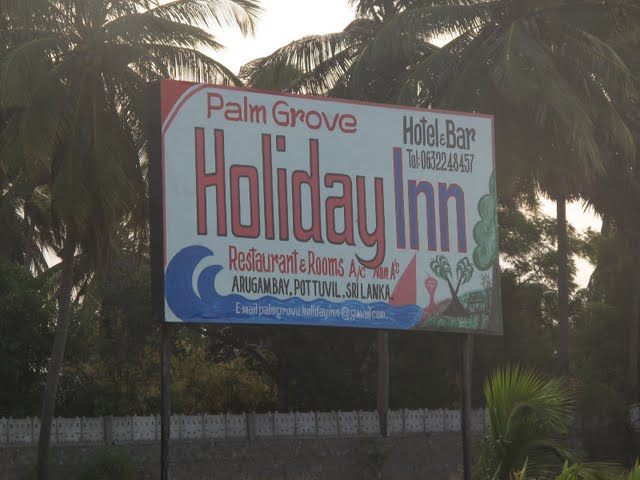
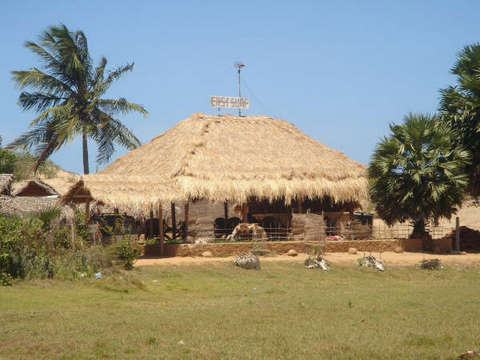
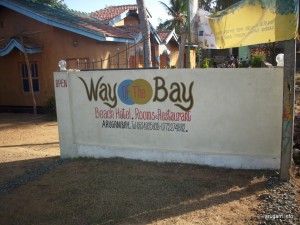
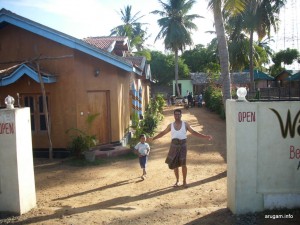
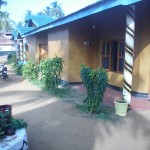
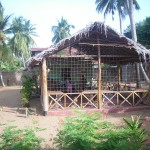
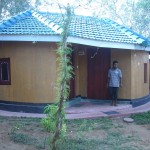


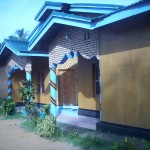
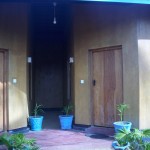
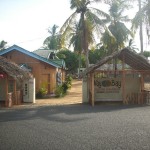
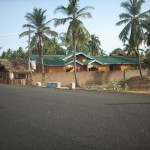
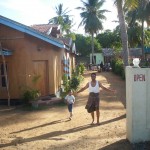
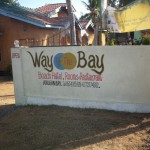




 Arugam Forum
Arugam Forum Arugam Photo Galleries on Picasa
Arugam Photo Galleries on Picasa Old Website
Old Website Press Coverage
Press Coverage Surf Forecast for Arugam Bay
Surf Forecast for Arugam Bay
TODAY’s Comments